|
Farm Forestry Timbers In this newsletter: |
|||||||||||||||||||||||||||
The historical Stone Store here in Kerikeri has an adjacent footbridge across the Kerikeri river, built about fifteen years ago. The wisdom of the day was that plastic decking, an amazing new product, was by far the best option for pedestrians to stroll on and admire the ducks beneath. It was expensive, but came with all sorts of promises about durability and that it would by far outlast timber. The council fell for the sales pitch and the structure was erected and for some time admired for its consistent appearance. Like with most builds, nobody asked what would happen with that plastic at the end of its lifetime, nor the fossil fuels used and carbon footprint involved with its manufacture. To this day nobody seems to consider the issues with plastics used in building products. Plastics dominate the industry in New Zealand. Laminate flooring wins out every time because it looks just like real wood but is far cheaper. Plastic fantastic but never with the word "plastic" in the product name. But plastic isn't resilient like wood. Sure, it's hard, but it's also brittle.
As the plastic decking boards have failed, they have slowly been replaced with wood decking boards. But what was once admired for its consistency, has become an ugly matrix of wood and plastic boards that don't match, a deck being patched up like a band-aid dressing. Not something that impresses me for a world class tourist destination, they could have just used wood in the first place.
As for the wonderfully named "laminate" plastic flooring, once the surface wears or fractures, thats it. Unlike wood you can't sand it back and recoat for a brand new finish. Your only option is to replace it.
Polluting and wasteful, just to save a few bucks. This consumer paradigm could change and our job is to lead the promotion of naturally durable wood as a renewable, sustainable material. Dean Satchell If you have a story for this newsletter, please get in touch with Dean by email. During the joint weekend in November 2023, a visit was made to Bill liley's farm, about 30km west of Owhango, in the scenic Retaruke area. Bill is in the forestry consulting business, and also owns this farm which is managed for him by another local farmer. He has a significant planting of an unusual tree – Chinese fir, Cunninghamia lanceolata. He was influenced to plant this species in the late 90s by reading a 1993 thesis on its potential for NZ by Lindsay Fung Apparently it has natural good form, is decay-resistant (full of extractives), and can coppice. In China it is used in the round as roof rafters so is grown with close stocking to keep the stems thin.
The local lines company cleared one row of his block to get coverage, and initially all the newly-exposed branches on the trees in the adjacent rows died, but they eventually grew back so the corridor has disappeared. The logs that were cut were laid down on the ground for 2 years, and had moss and grass growing on them, but when they were opened and milled the timber was fine, with no sap stain. As for disadvantages - like cryptomeria, the seeds stick in sheep’s wool, and Bill says he gets a rash from brushing against the foliage.
Photos and text Cynthia Barnard, from Waikato branch newsletter 97 Notes: The decay resistance of China-fir (Cunninghamia lanceolata) was evaluated in several tests using white- and brown-rot fungi in an American Wood Preservers' Association soil-block test. Although there was some variation in weight loss among boards, China-fir heartwood was found to be similar in decay resistance to western red cedar (Thuja plicata) and should be classified as highly decay resistant. Basic densities were lower than much of the native grown (Chinese) C. lanceolata and considerably lower than the range for P. radiata in New Zealand. The low basic density resulted in lower strength values for mechanical properties (bending, compression, shear tests). Drying rates were very similar to P. radiata and air drying or drying under a conventional (high temperature) P. radiata kiln schedule produce very little degrade. The low strength and basic density of the timber makes C. lanceolata less suitable for structural uses compared with P. radiata, and more suited to end uses where strength is not important. Here in New Zealand mechanical properties for timber center around those for radiata pine (SG grades). Structural compliance is straight forward for radiata pine and Douglas fir. In Australia, a large range of timbers are available and used for construction, so they are not so myopic. Their timber species are rated with "F ratings" for strength, to make it straight forward to build with a large range of timber species. Follows are some timber species from Narangba Timbers Brisbane ultimate guide to decoding timber grades:
Some of these timbers are grown here, but despite their exceptional mechanical properties, using them for construction is fraught wiith difficulties. Your engineer might suggest that you stick with good ole' treated radiata pine. Seems really unfair to me that locally produced natural timber products are so difficult to use for construction, while at the same time there is a push for more imported building products. More information on Australian grading is at Wood Solutions Australia: Research update: Thermally modified Eucalyptus regnans decking This trial was put in place in December 2013 to test thermally modified Eucalyptus regnans as outdoor decking, reported here: Thermally Modified Hardwood Timber Decking Trial Ten years later, we have five years to go in this 15-year durability trial. Here is the ten-year report: Assessment at age ten of this trial shows very little if any decay to date for the thermally modified Eucalyptus regnans decking in this trial. This site was selected to be at the high end of decay environments in New Zealand, being in Northland (warm, wet) and in an environment fully exposed to the weather. I have provided some photographs showing the state of the deck on 20th July 2023. The photographs were taken after a rainfall event and the deck was wet. Note that the deck is mossy and grubby from deliberate neglect:
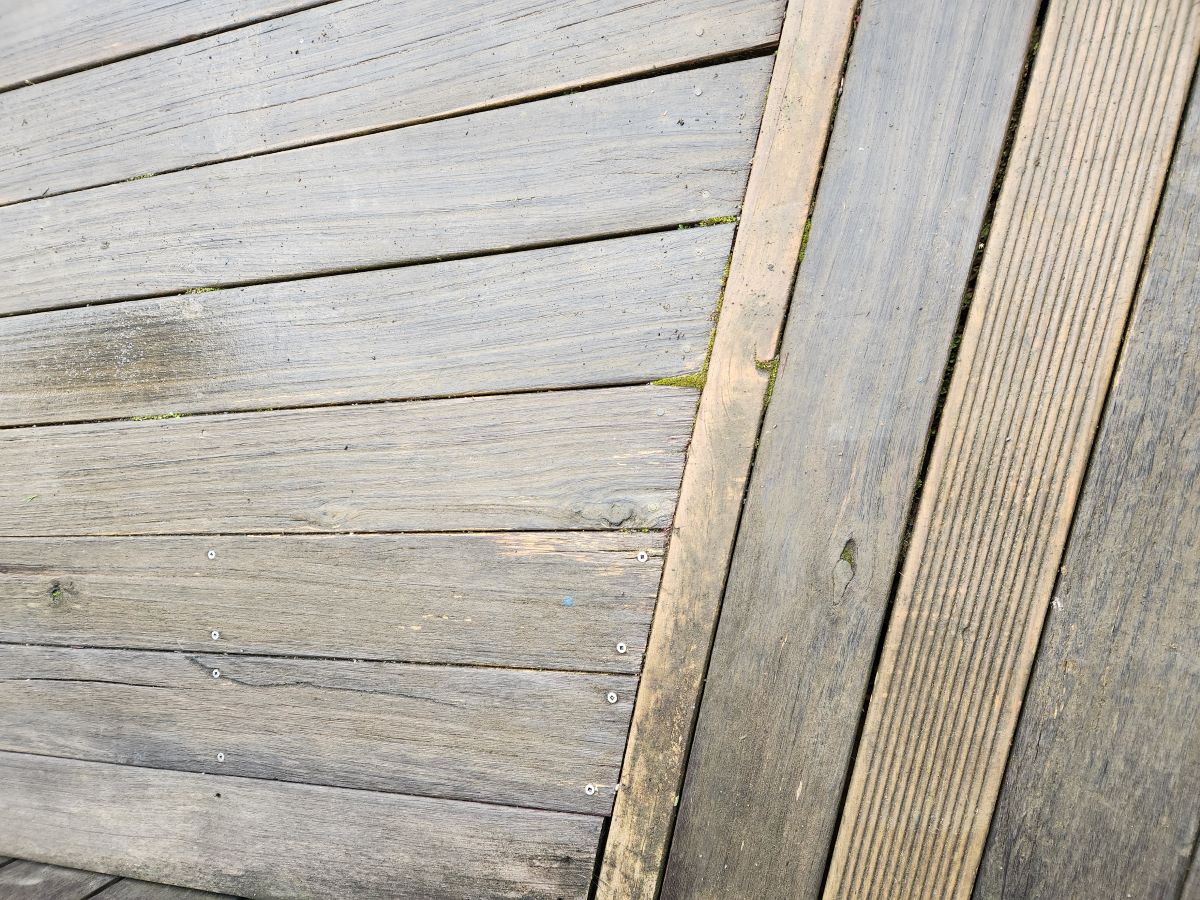 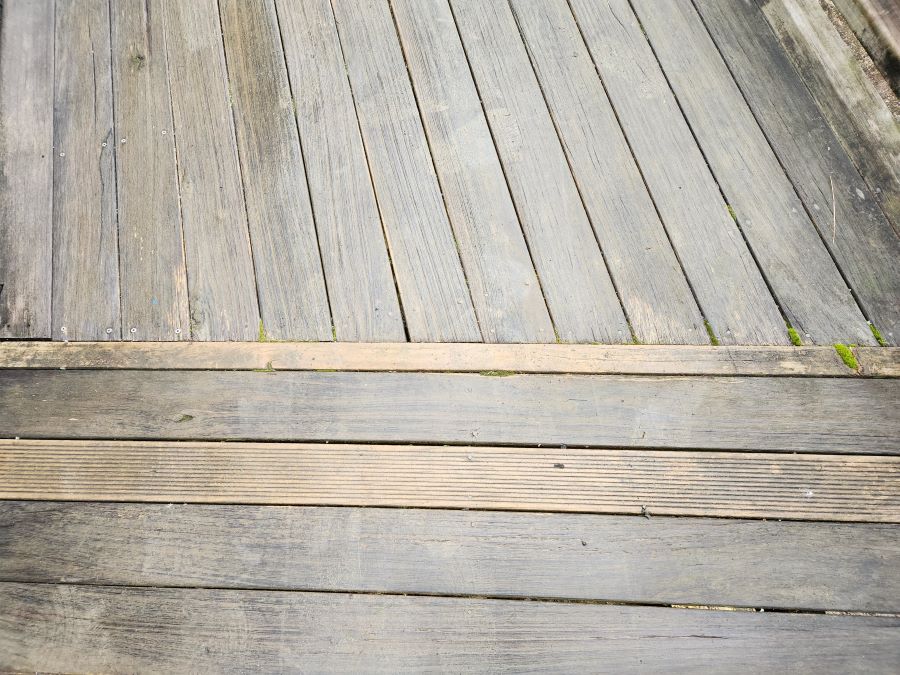
|
|||||||||||||||||||||||||||
Disclaimer: While every effort is made to ensure the accuracy of the information provided on this site, Farm Forestry Timbers Society do not accept liability for any consequences arising from reliance on the information published. If readers have any doubts about acting on any articles they should seek confirming, professional advice.
 Farm Forestry New Zealand
Farm Forestry New Zealand
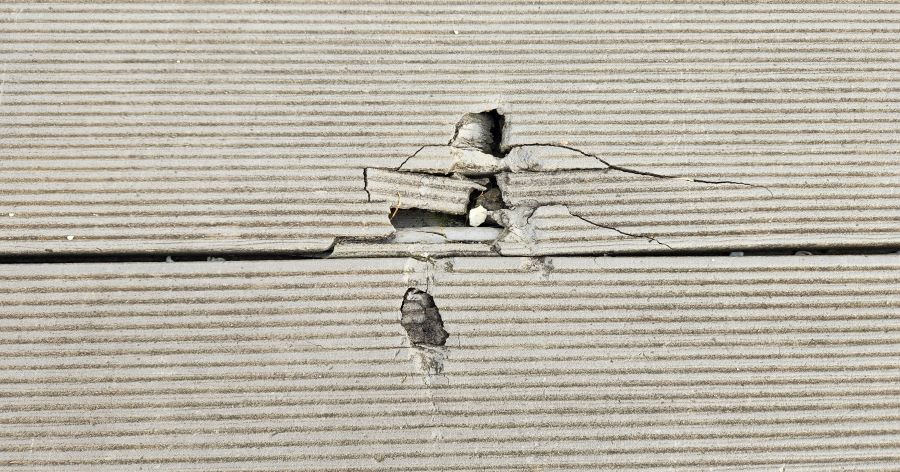
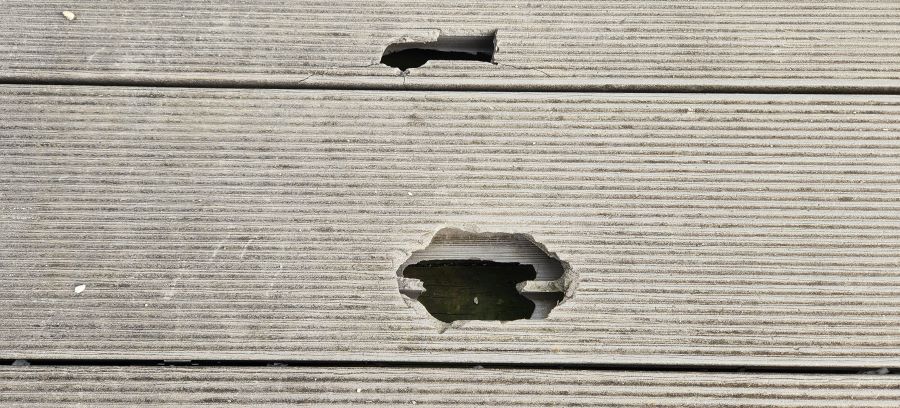
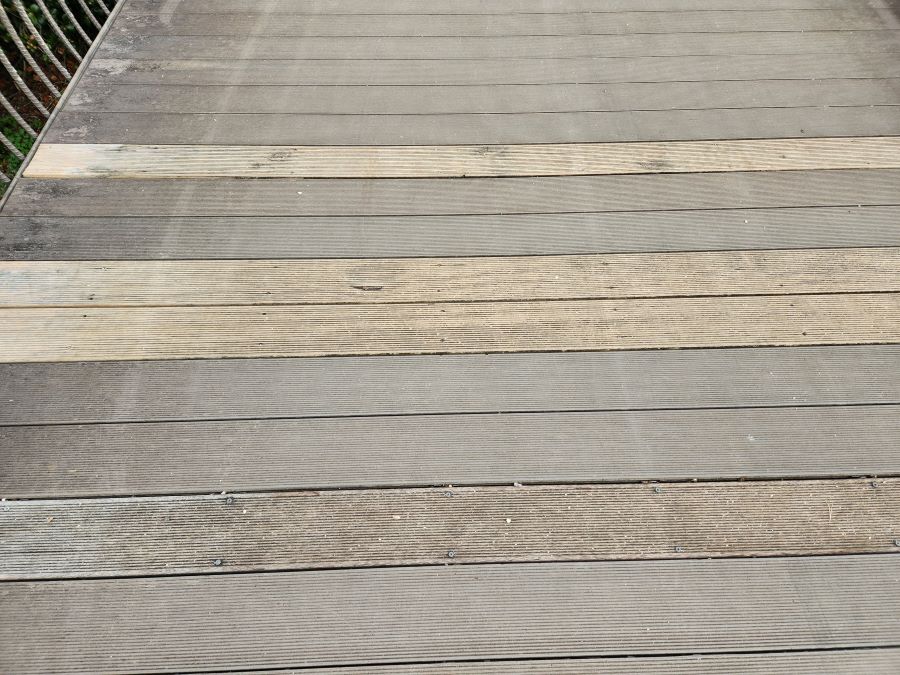
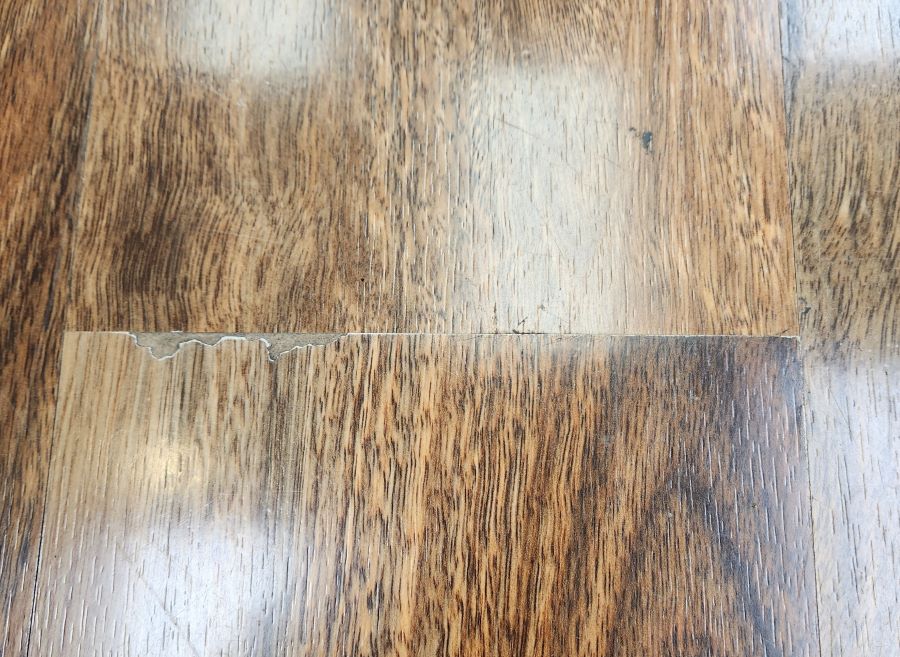
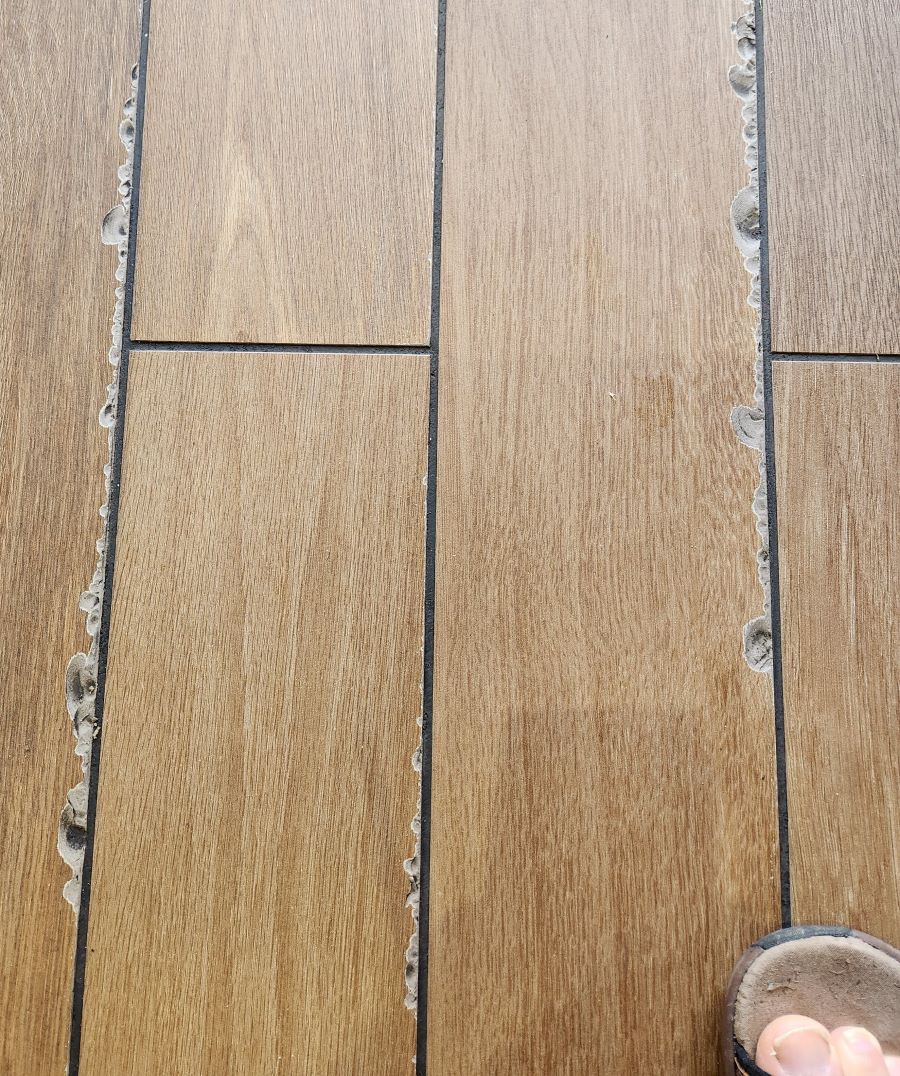
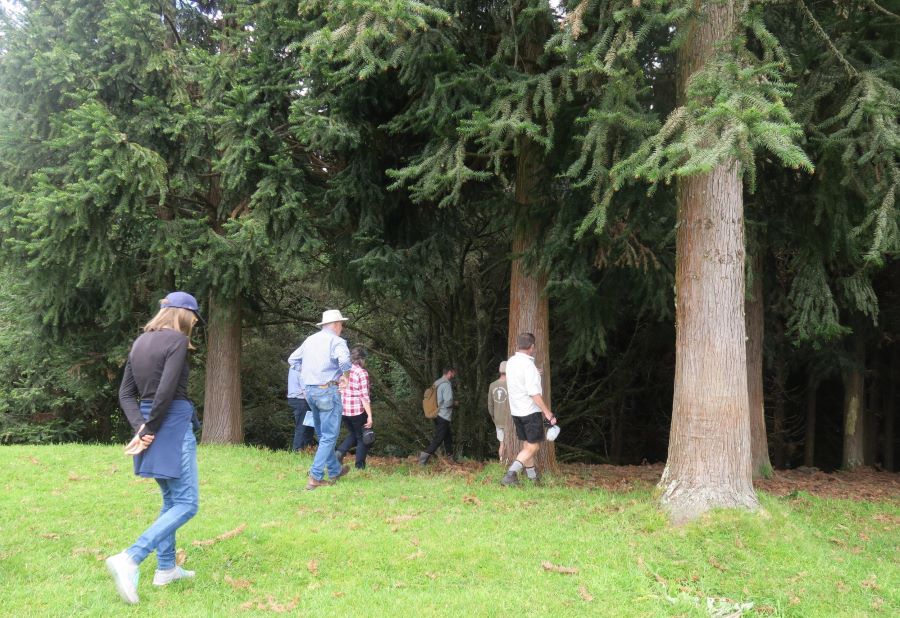
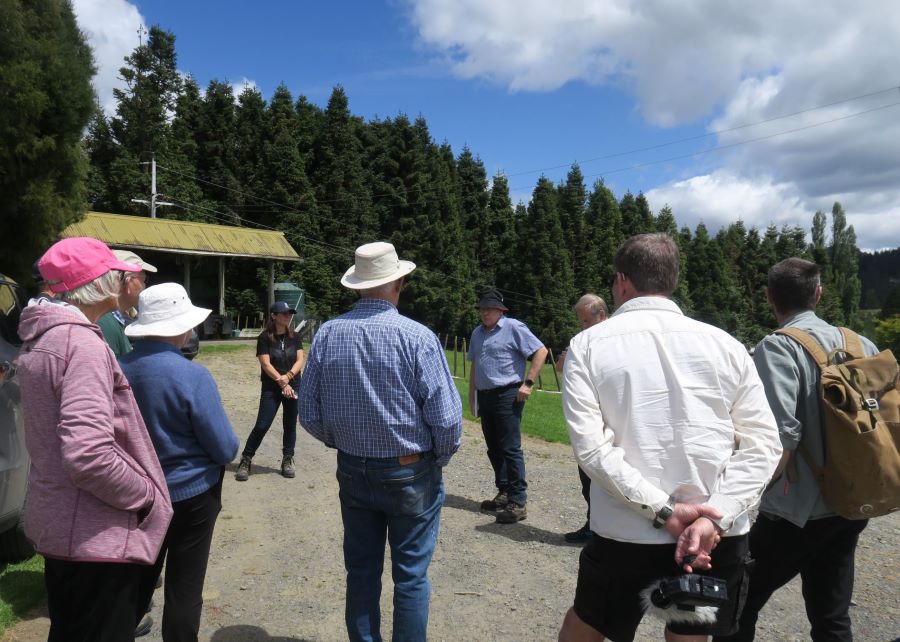
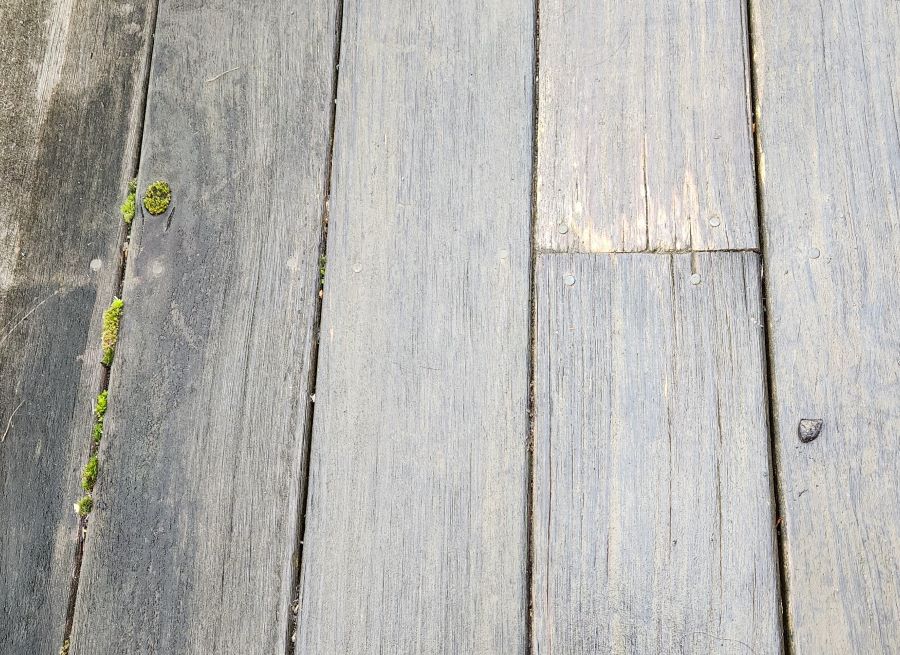 The deck was cleaned (waterblasted) once since installation, at approximately year 5. When the phots were taken moss and grime was well established and the deck surface dirty from 5 years without cleaning.
The deck was cleaned (waterblasted) once since installation, at approximately year 5. When the phots were taken moss and grime was well established and the deck surface dirty from 5 years without cleaning.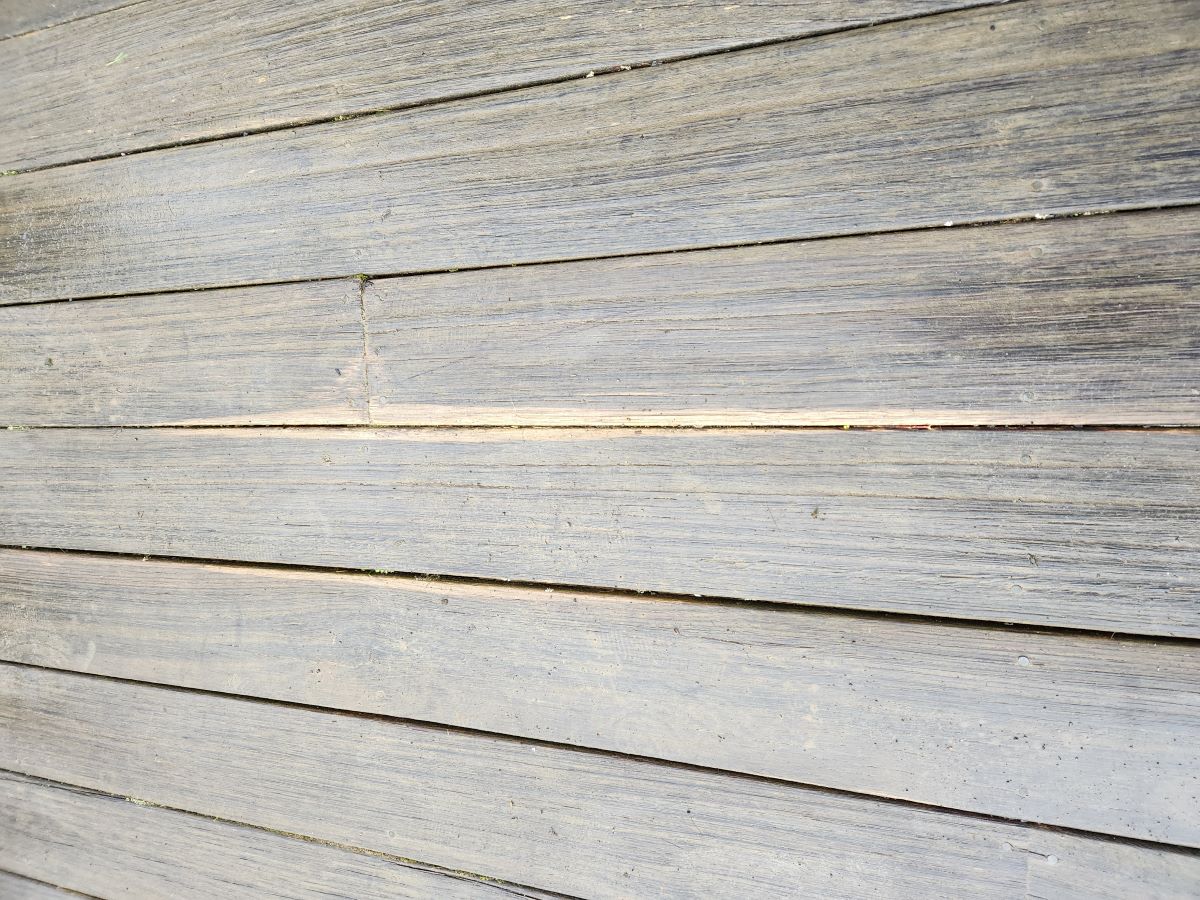 Some slight discolouration (whitening) is evident at the edges of some boards, suggesting thermally modified sapwood may not be as durable as thermally modified heartwood. However, to date this wood has not softened and the discolouration is only superficial.
Some slight discolouration (whitening) is evident at the edges of some boards, suggesting thermally modified sapwood may not be as durable as thermally modified heartwood. However, to date this wood has not softened and the discolouration is only superficial.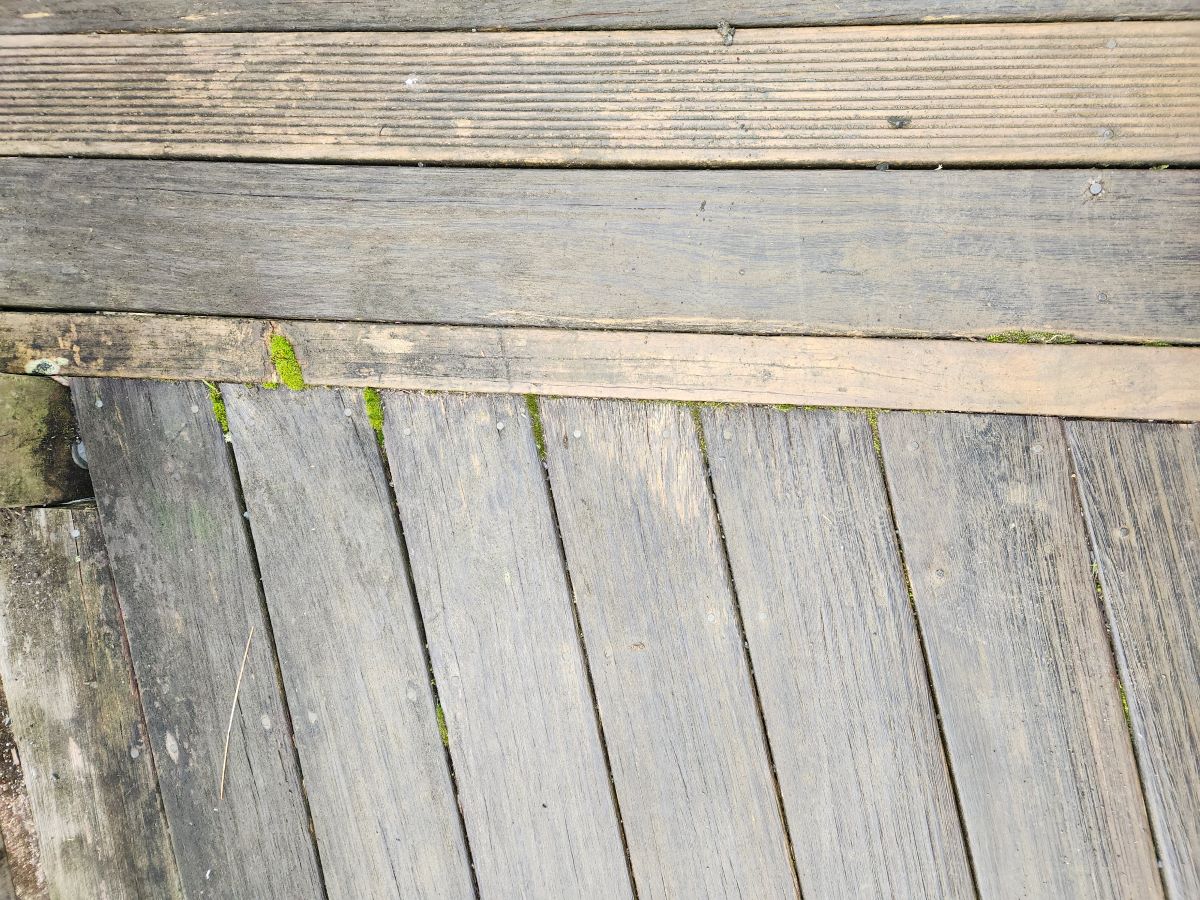 Note the grooved decking is the H3.2 radiata control.
Note the grooved decking is the H3.2 radiata control.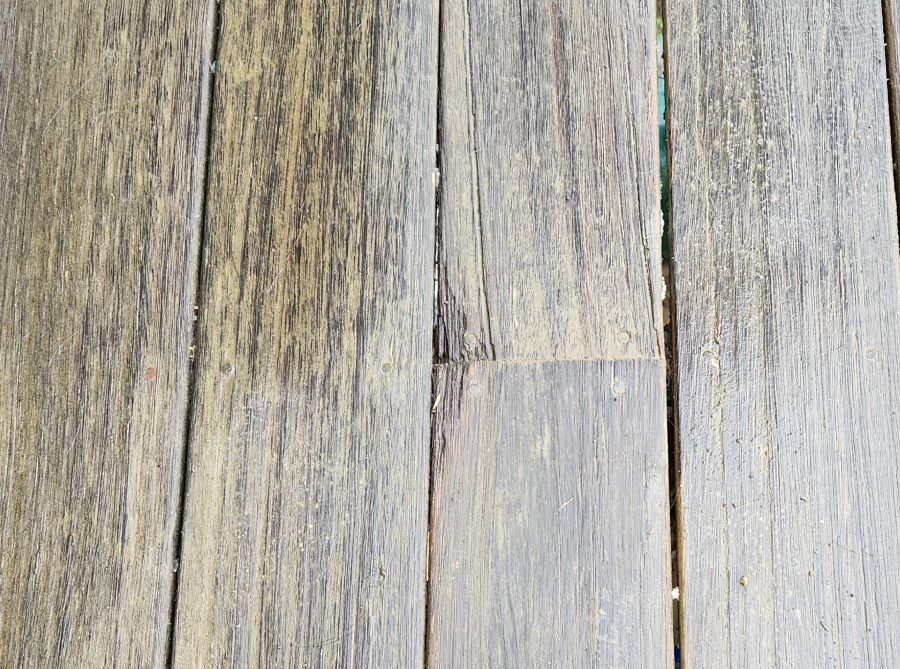 Some fibres were removed during waterblasting at year 5. Decay does not appear to have initiated at this site.
Some fibres were removed during waterblasting at year 5. Decay does not appear to have initiated at this site.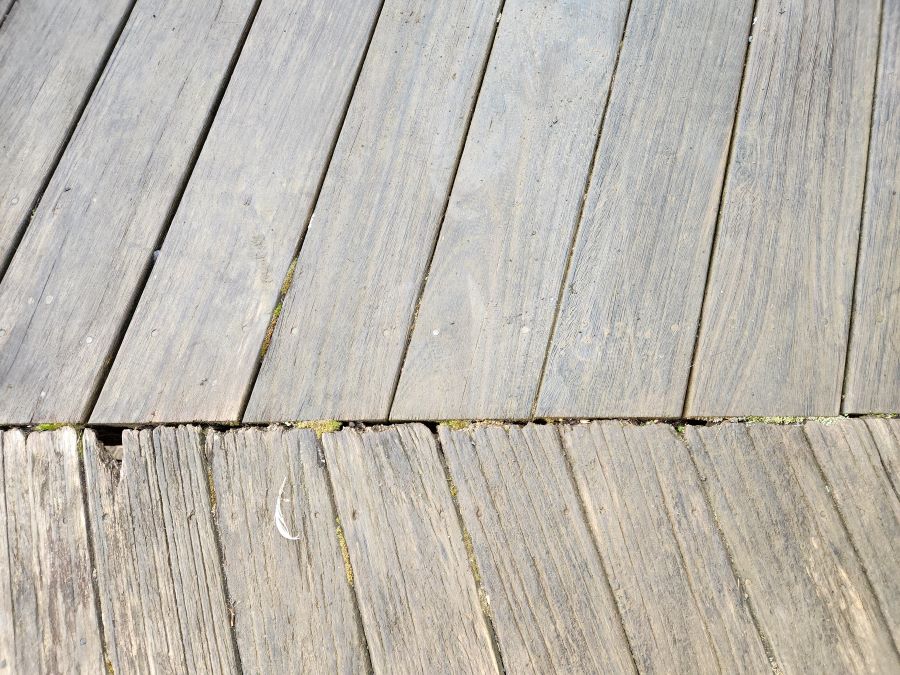 The Eucalyptus saligna decking in the photograph above (bottom) is 25 years old and the ends have begun to decay. The thermally modified E. regnans (top) shows no signs of decay.
The Eucalyptus saligna decking in the photograph above (bottom) is 25 years old and the ends have begun to decay. The thermally modified E. regnans (top) shows no signs of decay.